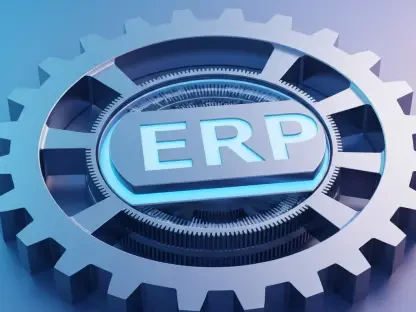As 2025 unfolds, the influence of artificial intelligence (AI) on data center operations becomes more evident than ever, driving essential trends that redefine the digital landscape. The surge of AI technologies compels enterprises to reexamine their data infrastructure strategies to meet evolving computational demands. The convergence of AI with data centers is not merely about accommodating emerging technologies but about adapting to the economic potential unlocked by AI innovations. Once perceived simply as optimizers of business processes, AI applications now require a nuanced approach that combines robust data management, efficient energy consumption, and strategic cloud utilization. This exploration of critical areas such as cloud rebalancing, observability, data governance, and energy resilience offers insights into how data centers can effectively support the burgeoning AI ecosystem.
Data Center Evolution Driven by AI
Cloud Rebalancing Imperatives
In 2025, enterprises increasingly face the challenge of optimizing their data workloads due to the expansive nature of AI. Cloud rebalancing emerges as an essential strategy for organizations seeking to fine-tune their infrastructure for optimum performance and efficiency. It involves redistributing workloads across varied environments, such as public clouds, on-premises data centers, or colocation centers—a method proven advantageous even before the prevalence of generative AI applications. An IDC report underscores this trend, revealing that approximately 80% of businesses are contemplating shifting resources to on-premises solutions in the upcoming period to better manage AI demands.
This redistribution enables enterprises to leverage proprietary data for model retraining in private settings, ensuring greater control and data security amidst the expanding data landscape. The strategic choice to maintain data locality is further magnified by compliance necessities related to sovereignty and privacy regulations, which demand stringent adherence as global data usage becomes eminently expansive. Moreover, seamless transfer of data from vendor-neutral storage is pivotal, facilitating smooth operations across multi-cloud setups. This adaptability allows businesses to efficiently move data between core infrastructures, positioning themselves favorably for a dynamic AI integration process throughout 2025.
Enhancing Data Governance
The importance of establishing comprehensive data governance frameworks becomes increasingly critical as AI technologies proliferate. Enterprises rely on an informed understanding of their data estate to effectively train AI models; this encompasses detailed insights into data ownership, its sources, and organizational characteristics. Such awareness safeguards privacy and ensures compliance with applicable regulations—a necessity underscored by industry surveys revealing prevalent data management challenges.
Establishing robust data governance procedures is imperative for data privacy and regulatory adherence. Statistics indicate a prevalent lack of formal policy presence among organizations, with a McKinsey survey indicating that 70% of respondents encounter governance-related hurdles. These findings highlight the necessity of integrating governance frameworks to address privacy concerns and optimize regulatory compliance measures, ensuring that AI investments yield quality and effective results. As enterprises transition into the latter half of 2025, formalization of governance practices not only supports AI model training but also anticipates potential barriers, fortifying data management strategies.
Navigating Observability Needs
AI’s rapid expansion presents an advanced threat landscape that data centers must navigate, heightening the need for enhanced observability practices. As enterprises increase their connections with varied cloud and service providers, the scope and complexity of potential threat vectors expand significantly. Observability tools provide essential visibility into these landscapes, empowering enterprises to bolster command and control frameworks effectively. This visibility is indispensable for identifying and mitigating potential exposure points that could be exploited.
In 2025, collaboration across industries to implement observability best practices plays a crucial role in reinforcing security defenses against evolving threats. Enterprises need to combine accessibility with rigorous observability processes, ensuring that defenses robustly counteract vulnerabilities. Visibility ensures real-time insights into potential threats, facilitating preemptive strategies to tackle incidents and secure data and networks against incidental breaches. Open dialogues and partnerships within the industry will be essential for deploying observability measures that adequately address the expanding threat spectrum associated with AI integration into operational frameworks.
Energy Demands of AI Applications
Addressing Energy Consumption Challenges
AI training processes’ overwhelming energy requirements present a formidable challenge that demands comprehensive responses from industry stakeholders and policymakers alike. A simple AI query consumes exponentially more energy compared to traditional search processes, underscoring the urgent need for balancing energy consumption with technological progress. Addressing this dilemma requires proactive dialogues centered on integrating alternative energy solutions that minimize the strain on existing power grids.
2025 paves the way for innovative approaches, featuring promising prospects such as hydrogen and nuclear energy options alongside expedited infrastructure development for data centers. These mechanisms promise relief from potential bottlenecks and mark crucial steps to preserve sustainable growth and mitigate environmental impacts. Policymakers must champion public policies emphasizing expanded utility efforts and direct investments to bolster transmission infrastructures, thereby preventing declines in AI potential. Collaborative efforts focused on power capacity advancements continue to nurture an environment that secures incentives for prosperous AI frontiers.
Fostering Collaborative Energy Solutions
A proactive stance toward addressing AI energy demands involves synergistic collaboration among diverse stakeholders, ranging from industries to governments and community entities. The current mandate identifies requisite coordination in optimizing energy infrastructures, exploring opportunities to integrate nonconventional power sources with traditional systems to achieve efficient outcomes.
Representatives from industries and policymakers are urged to engage communities, ensuring inclusive dialogues centered on emerging energy landscapes. Such initiatives support the necessary groundwork that fosters integrative responses toward energy challenges, propelling AI-positive growth without compromising sustainability. By championing utility-focused public policies and incentivizing partnerships, sectors can innovate resource dialogues, enabling AI-driven advancements to thrive within attainable energy frameworks. The cumulative result of stakeholder efforts is a secure environment that preserves AI’s transformative potential.
Shaping the AI-Driven Future
In 2025, businesses are increasingly challenged to optimize data workloads due to AI’s expansion. Cloud rebalancing has become a vital approach for organizations aiming to streamline their infrastructures for peak efficiency and performance. This strategy involves redistributing workloads across various platforms, such as public clouds, on-premises data centers, or colocation facilities. Prior to the rise of generative AI applications, this method already showed significant benefits. An IDC report highlights that around 80% of enterprises are looking to shift towards on-premises solutions soon to better tackle the demands posed by AI.
This redistribution strategy enables companies to utilize proprietary data for model retraining in secure private environments, enhancing data security and control. The importance of maintaining data locality grows with compliance requirements, particularly regarding sovereignty and privacy laws. Efficiently moving data from vendor-neutral storage is essential, ensuring smooth transitions in multi-cloud environments. This adaptability positions businesses for optimal AI integration through 2025.









